Choosing LED strips for plants
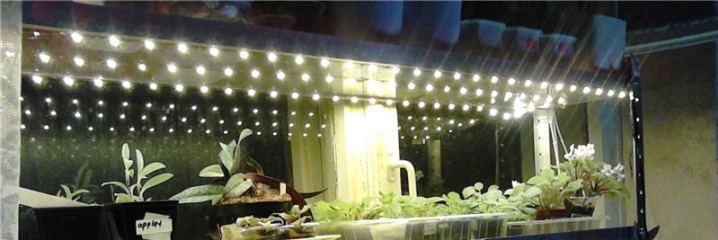
Among lovers of the garden and winter harvest, special illumination for plants is becoming especially relevant. We are talking about a diode strip that provides artificial lighting. This type of lighting replaced light bulbs that contained mercury and had a shorter lifespan. The most modern and relevant type of lighting for plant care is called LED phyto tape, since the diodes are collected in one single chain.
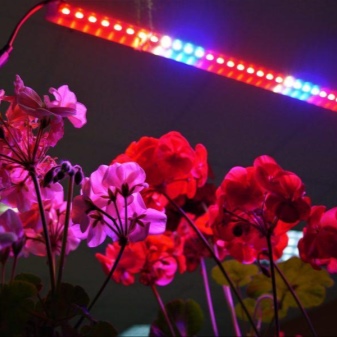
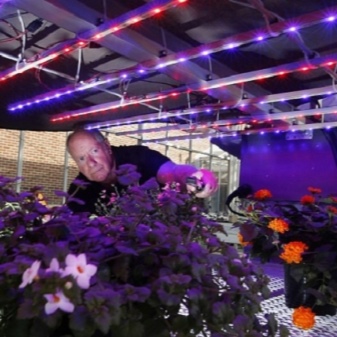
Peculiarities
Plants do not always receive as much light as they need for rapid growth and good fruiting. Light is food for them, so if they grow in the house, on the balcony, then the installation of an LED lamp with LEDs is simply necessary. Such an adaptation will increase the strength of flower growth, provide accelerated photosynthesis and fruiting. If you install a phyto-lamp, you can increase the duration of daylight hours up to 18 hours. This ensures good photosynthesis, without which plants cannot develop.
Blue diode bulbs are considered the most effective for plant growth; there are also options with a purple tint. If the plant is already beginning to form ovaries, then the owner needs to take care of effective fruiting.
Red bulbs are best suited for fruit growth and development.
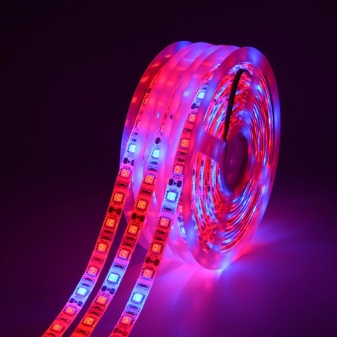
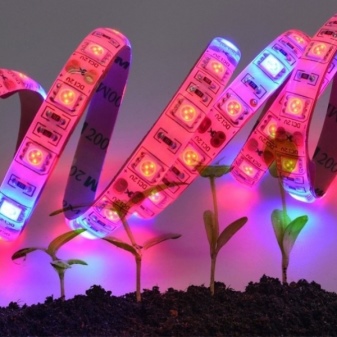
LEDs differ from energy-saving light bulbs in a number of advantages.
- Durability and vibration resistance.
- Safety (bulbs do not contain harmful substances).
- Saving electricity.
- Turning off or turning on a light bulb does not affect its lifespan in any way.
- The lamps are very compact, they do not need to purchase large control devices, only a small power supply is required.
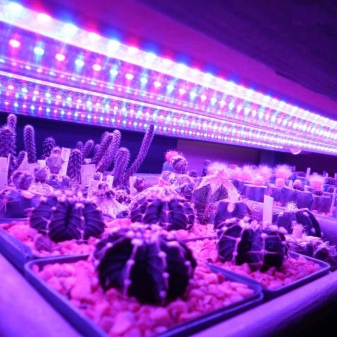
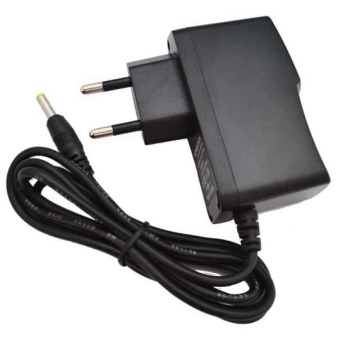
The disadvantage of such bulbs is their high cost. Lamps of this configuration have appeared relatively recently and are not yet as common as their counterparts. It is likely that LEDs will become more common in the future and their cost will be reduced.
Bulbs also provide light that human eyes are not used to. If you look at the LEDs, you can get a feeling of stabbing in the eyes. In addition, with poor heat dissipation, the lamps can become very hot. If you provide the structure with proper cooling, then the diodes will faithfully serve for several years.
In some ways, ultraviolet light is not good for plant growth. Stems and leaves may turn yellow, the plant becomes weak. This happens if the plant is exposed to pure ultraviolet rays.
... In nature, the role of a kind of filter is played by the ozone layer, and plants do not feel the harmful effects of pure sunlight.
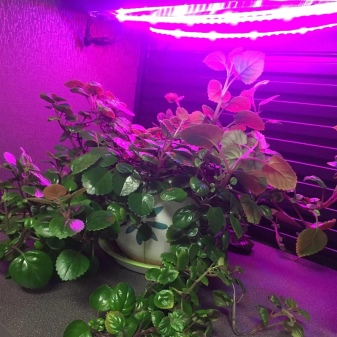
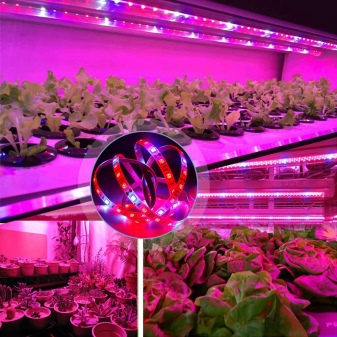
In artificial conditions, everything happens differently.
- Long lasting ultraviolet rays (315-380 nm) do not allow plants to grow well, but stems develop well. The plant quickly receives all the vitamins it needs. If 315 nm radiation is used, then shrubs and other representatives of the flora tolerate mild cold well. This is especially true if the plants are late, and fruiting or flowering occurs in autumn. At this time, frost has not yet come, but the sun no longer warms so intensely.
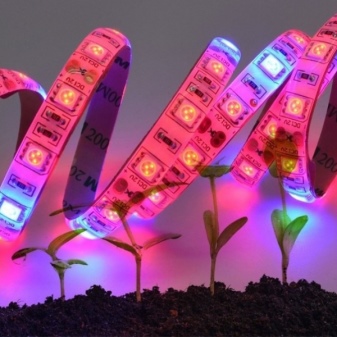
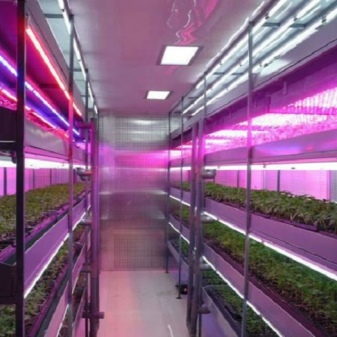
- Violet and blue light provides excellent photosynthesis. The plant absorbs more light, grows well, ovaries develop.
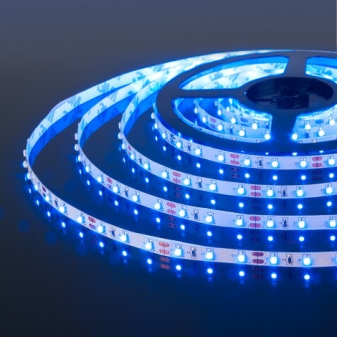
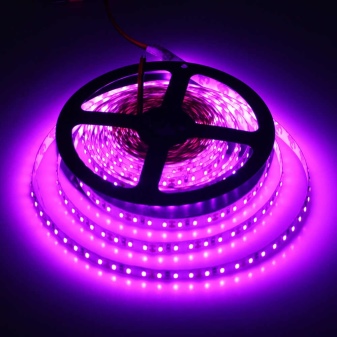
- The green tint does not affect the development of the greenery of the plant., because photosynthesis under such lighting is not very intense. Green light is good for crop growth.
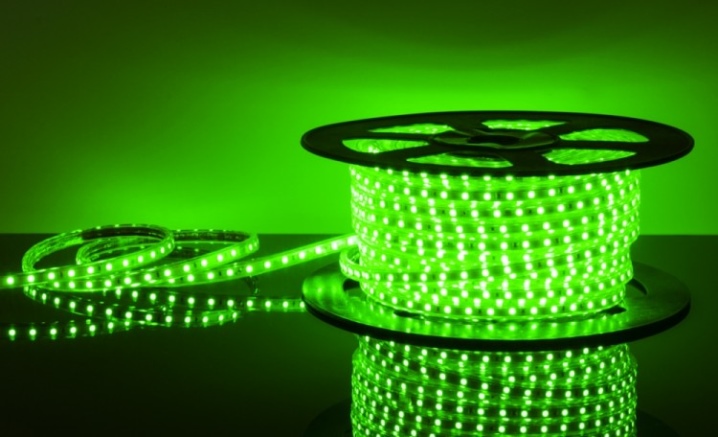
- Red light is considered to be essential for high quality photosynthesis. It is this spectrum that allows plants to grow quickly and gain strength.
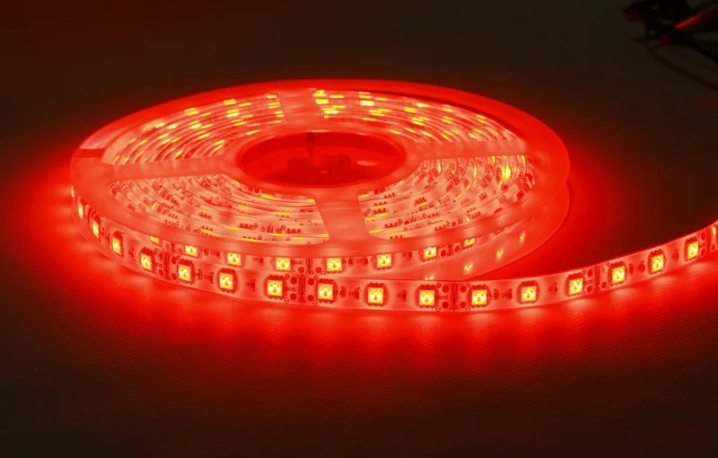
If the plant is grown at home, then phytolamps are needed. It is necessary to use such lighting if the plants have just begun to grow. Luminaires work well, which give a diffused glow and interact with all surfaces of the plant. However, this can be expensive. An excellent and more affordable alternative can be considered LED strips designed for accelerated plant growth. The LEDs can be positioned vertically. In this position, the light hits the leaves and stems of the plant, none of the plants will "starve".
However, the LED strip cannot be considered a panacea. It is especially relevant at the earliest stage of plant development. When the plant grows in height or begins to release flowers, you need to re-arrange the lighting a little.
You can add new lamps, come up with new solutions to ensure high-quality plant growth. For each culture, an individual type of lighting will work well.
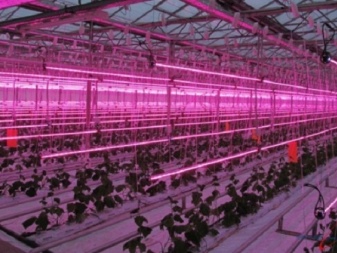
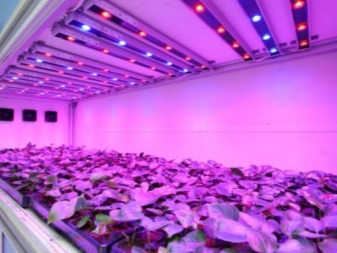
Species overview
There are not so many variations of LED strips. All options work according to the same principle. The LED gives light using two semiconductors (each has its own charge - positive or negative).
The main difference between LED devices is in two main characteristics.
- The difference is in the number of colors. A luminaire of this configuration can operate in a different spectrum. Bulbs can be both multispectral (with different colors, RGB) and monospectral (one kind of color, for example, white).
- The difference is in the type of brightness. If you do not connect the diode to the power supply, then its brightness can be recognized by the marking. There are three varieties (SMD 5050, SMD 3528, SMD 5630). The digital indicator is responsible for the light parameters of the diode. The higher the value, the brighter the light will shine.

Full Spectrum Tape
If you use phytodiodes, you can increase the growth and strength of indoor plants by several times. Thanks to this, you can become the owner of an excellent harvest, even if the planting was done at home, in the winter garden or on the balcony. Lamps with a full color spectrum work well in any room. They are great for crop production and will help ensure plant growth. Lamps of this configuration give off red and blue light, which are considered to be the most suitable for crop production.
The quantitative indicator may be different; to determine it, you need to familiarize yourself with the technical characteristics of the device. For example, in stores you can pick up ribbons with a combination (5 to 1, 15 to 5, 10 to 3). The best options are luminaires with 5 blue bulbs and 1 red. Such lighting is well suited for plants that are planted on a windowsill or on a balcony (plants in such a situation have access to normal sunlight).
Full color LED light bulbs are the perfect solution for growing any kind of plant.
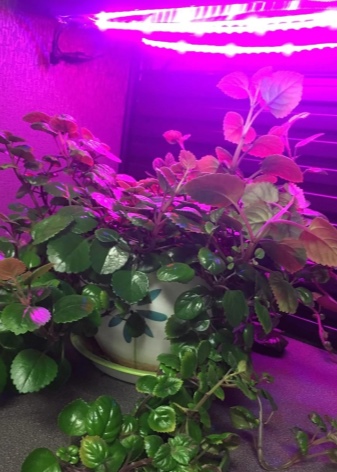

Which tape should you choose?
The question of choice is extremely important. It is best to choose good quality LED bulbs from reputable companies. Chinese products may not have the required quality or have errors in the declared characteristics. As a result, plants will grow poorly, and a good result will simply not be achieved. Attention should be paid to the calculation of light emission for each individual plant species. The light index will be different for each crop. To do this, you need to find out the exact indicator of light for each type of plant.
You cannot save on a power supply, which is also called a driver. This is a very important device that ensures the smooth operation of LED bulbs.The power supply unit must have the same power as the phytotape itself.
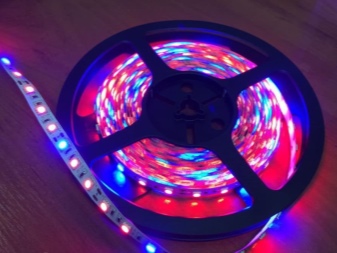
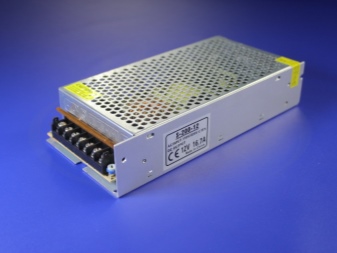
It is worth taking a closer look at the models with a margin so that the device will serve as long as possible. It should be remembered that a certain amount of energy is spent on cooling, so the unit must have 30% of the energy reserve for high-quality operation of the tape.
If you follow all these rules, then the plants in your makeshift garden will grow quickly and will delight you with excellent yields. Blue ribbons should be purchased with continuous light wavelength (approx. 445 nm). For red lamps, the indicator is higher - 660 nm. A small error is quite acceptable.
All these recommendations are relevant only for plants planted next to a window. If the plants are located in the back of the room, and the sunlight does not reach them, it is better to buy a multispectral tape.
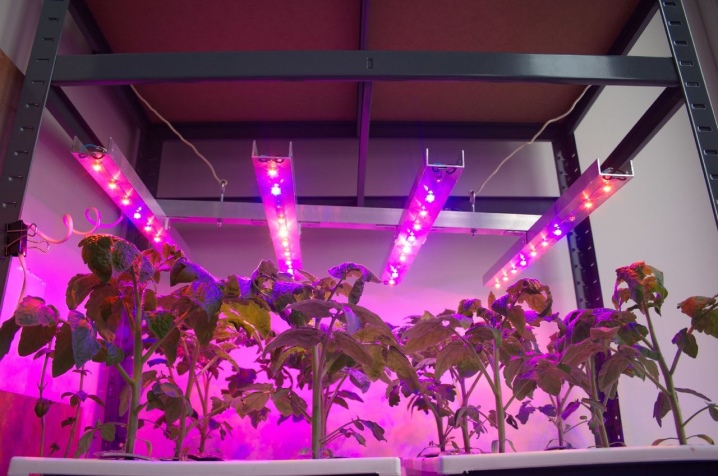
Connection
The connection is carried out sequentially, in several stages. Do not turn on a lot of bulbs at once, as the power of the electricity does not increase every time you turn on another bulb. It is best to use a driver when connecting, which normalizes the voltage to a suitable value. It should be remembered to cool the device, which allows the belt to run for a longer time. For these purposes, an aluminum case or special coolers are often used.
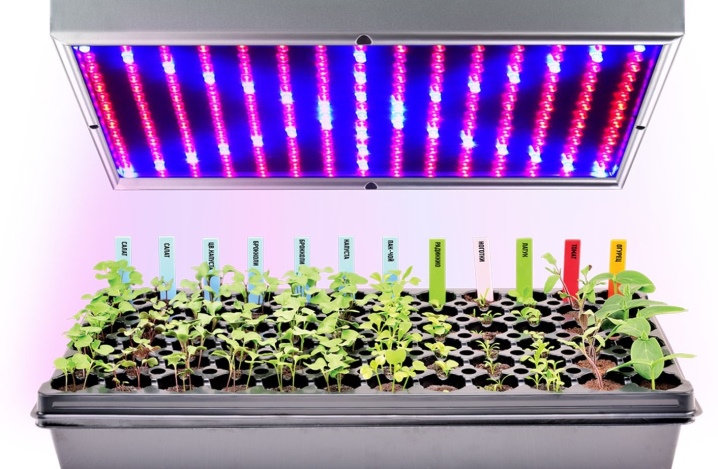













The comment was sent successfully.